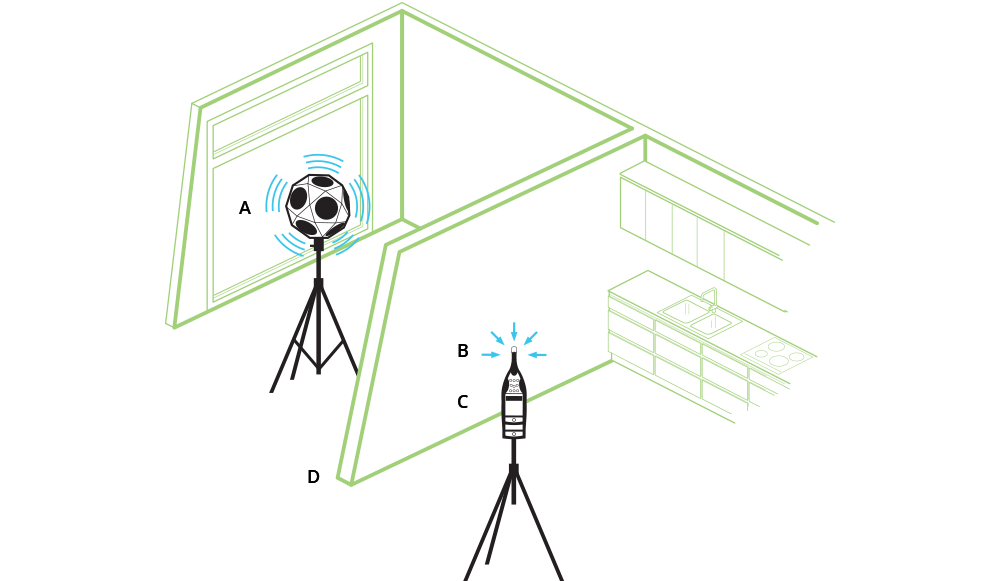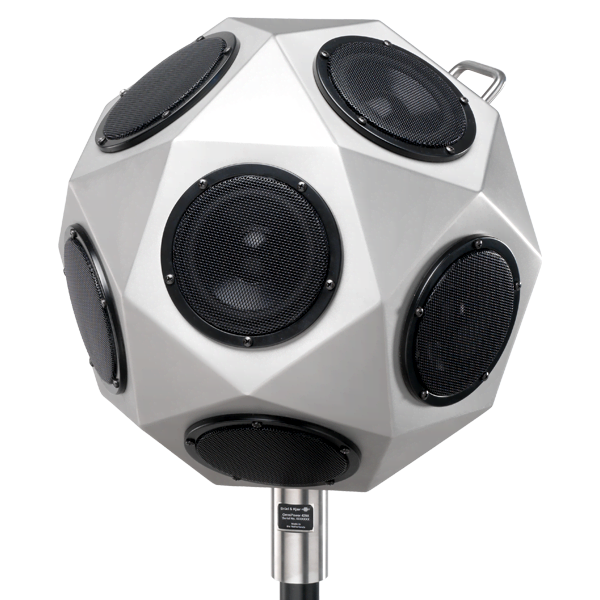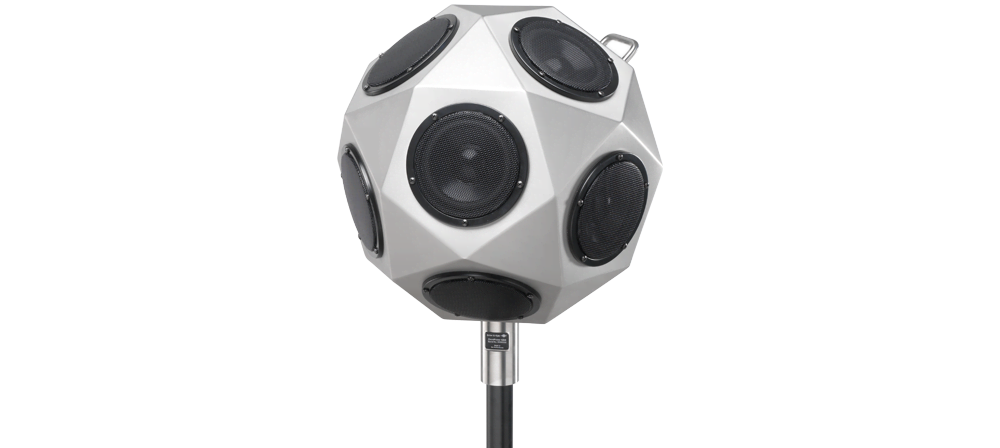 WHITEPAPER
WHITEPAPERFROM SOUND LEVEL METER TO ACOUSTIC CAMERA
What is Building Acoustics?
Building acoustics is the science of sound transmission from one dwelling or room to another, and how to measure and quantify how much sound is transmitted. Building acoustics has two main types of noise: airborne sound (music or voices) and impact sound (footsteps in adjoining apartments). Although much of the sound that is transmitted from one apartment to another is due to transmission of airborne sound through the wall, a significant amount of sound is also transmitted indirectly via the building structure.
Building regulations stipulate how much sound insulation there should be between adjoining apartments and terraced housing. Sound insulation is a function of the building partition and not the room. Particularly for new buildings, building acoustics measurements are performed to confirm that regulations are met. These measurements quite simply measure how much sound is transmitted from one room to another, from the source room with the noise, to the receiving room.
The figure below illustrates a measurement of airborne sound insulation, which in in simple terms, is the difference in noise levels between the source room with the noise and the receiving room.

Equipment for measuring acoustics
Measuring building acoustics requires specialized equipment, the main components being:
- Type approved class 1 (IEC 61672-1) sound level meter
- Associated post-processing solution for PC
- Omnidirectional loudspeaker (sound source)
- Power amplifier to drive the loudspeaker
Let’s now take a closer look at the loudspeakers used for building acoustics.
What is an Omnidirectional Sound Source?
The loudspeakers that are used for building acoustics look nothing like the ones you use in your home music system. The standards that define how building acoustics measurements are made, specify the use of an omnidirectional loudspeaker.
Whereas your music system’s loudspeakers send sound primarily in the direction of the listening position, an omnidirectional loudspeaker radiates noise equally in all directions. The requirement for omnidirectionality is usually fulfilled by having 12 loudspeakers evenly arranged in a dodecahedral pattern, hence the term dodecahedral loudspeaker is sometimes used to describe the sound source.
The omnidirectional loudspeaker is designed to quickly fill the source room with what approximates to a diffuse sound field, that is, where sound pressure is the same everywhere in the room and the sound waves reach the observer from all directions. In theory, if a sound field was perfectly diffuse, then it wouldn’t matter where the microphone was placed, it would measure the same sound pressure level.
In practical measurement situations, a sound field will never be perfectly diffuse and for this reason, standards require the averaging of multiple measurement positions per room.
Loudspeaker Requirements
There are many omnidirectional loudspeakers from different manufacturers on the market. Although outwardly they look similar, it is important to read and understand the technical specifications, as performance varies in respect of the primary features (related to measurement quality) and the secondary features (related to ergonomics).
 LEARN MORE
LEARN MOREOMNIPOWER SOUND SOURCE TYPE 4294-L
The primary features of a sound source used for building acoustics are defined by the ISO 16283-1 standard. When used for room acoustics, the ISO 3382-1 standard defines the requirements.
- Directivity: Sound should be radiated equally from the sound source in all directions, that is, the loudspeaker should be omnidirectional. The degree of directionality is defined by the standards and is the function of the loudspeaker alone and not influenced by the properties of the source room
- Spectrum: Even though sound insulation measurements are a difference measurement, the standards stipulate that the difference between adjacent 1/3-octave bands is a maximum 6 dB. The frequency response of the room will influence the result, so this requirement is really to the measurement and not the equipment. In short, the objective is to have the flattest possible source room signal to perform the measurements
- Sound power level: The sound power output of the loudspeaker should be sufficiently high for the sound pressure level in the receiving room to be significantly above the background noise level. This requirement is a function of both the loudspeaker and the power amplifier that drives it. Typically, a good quality omnidirectional loudspeaker for building acoustics will generate 100 dB per band (that is, very loud)
- Level stability: To be suitable for building acoustics measurements, the sound power shouldn’t change significantly as a function of time. As the loudspeaker heats up, the ‘compression’ effect will decrease sound levels, this effect should be compensated for, so the level drop is less than 0.2 dB/min.
 FROM SIMPLE TO ADVANCED
FROM SIMPLE TO ADVANCEDSOUND LEVEL METERS & VIBRATION METERS
The secondary features are purely related to ergonomics such as size and weight. Although secondary in themselves, when one remembers that building acoustics are usually carried out by one person, the weight and carrying solution of the equipment can become significant in a long measurement job, particularly in new apartment blocks where the elevators are not yet in use.
Performing building acoustics measurements is a skilled job. The technician carrying out the measurements needs to be trained and familiar with his local legislation. He also needs the proper specialized equipment including a fully compliant omnidirectional sound source.
Equipped with specialized knowledge and the proper equipment, you will have the best platform for objectively measuring sound insulation between any two rooms - and compare it to the applicable building regulations.



